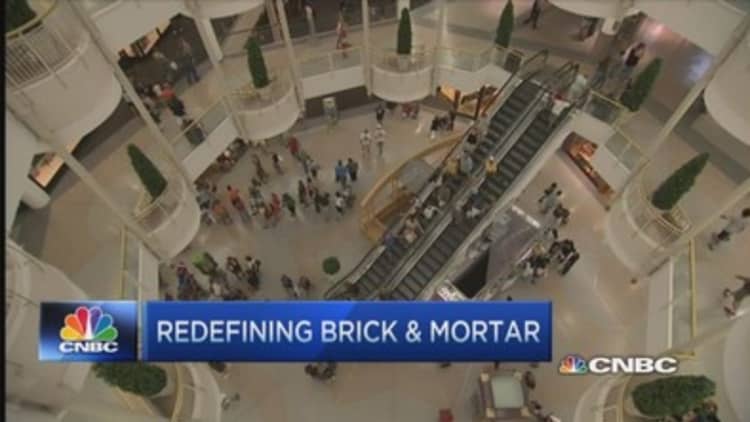The average shopper's keychain is bogged down with loyalty cards for their local supermarket, drug store or favorite apparel retailer.
But despite the fact that the average U.S. household belongs to more than 21 loyalty programs, few of these initiatives are providing consumers with more than just an easy way to find their keys.
According to a recent report by Capgemini consulting, shoppers actively use fewer than 50 percent of the rewards programs to which they belong. The statistics are even worse on social media, where nearly 90 percent of the conversation around loyalty programs was negative during the month of December, the firm said.
The difference between a successful loyalty program and one that falls flat can be huge for a retailer's top line. Mark Taylor, one of the authors of Capgemini's study, said a well-run program can increase a company's overall profitability by 20 percent.
What's more, it's cheaper to persuade existing shoppers to spend more in a retailer's store, with costs running five to seven times higher to acquire a new customer, he said.
Read MoreWant to tap $3.4 trillion? Don't miss this shopper
"In the U.S., [companies] spend $50 billion annually on loyalty programs; they're just not hitting the mark," Taylor said.
Below are five ways rewards programs are falling short.
Rewards can be hard to redeem
It seems not a day goes by when retailers don't flood the zone of consumers' inboxes. So why is it that so few rewards programs allow shoppers to redeem their points on their smartphones?
According to Capgemini's study, although 79 percent of loyalty programs use mobile strategies to target shoppers, less than a quarter allow them to redeem rewards through the technology. This makes it difficult for consumers to easily bounce between the web and the store while shopping, and can cause retailers to miss out on a potential sale.
"If you care about your customers and you listen to what your customers are telling you … then the program rewards can't be out of sync," Taylor said.
They're all about the Benjamins
Shoppers want to feel as if they're more than just another transaction.
But because loyalty programs haven't substantially evolved since their original inception in the 1980s, when American Airlines began rewarding frequent travelers with miles, Forrester analyst Emily Collins said in a recent report that companies are not tapping into the most important aspect of shoppers' loyalty: their emotional loyalty.
"Loyalty as we know it today, ruled by points and discounts, is insufficient," she said.
Read MorePriced at $2M, are retail apps really worth it?
Jay Henderson, director of product strategy for IBM Commerce, said retailers should pursue different avenues of engaging shoppers, by rewarding them for activities including checking into a location on their mobile phone or writing a review. Only 16 percent of programs currently reward customers for writing reviews or taking online surveys, Capgemini's study found.
"Certain brands can get into a cycle where they're hyper-focused on 'What's the discount today,' " Henderson said. "They can lose sight of the bigger experience around their products and services."
They need to get personal
This one may come as a surprise for anyone who's heard tales of a retailer keying into the fact that a shopper is pregnant before she's shared the news with her parents or significant other. But according to Capgemini's study, only 11 percent of loyalty programs push personalized offers based on a shopper's location or purchase history.

Instead, rewards are typically based on a shopper's "class," which lumps together customers whose only commonality is the amount of money they spend.
Along those lines…
One of consumers' biggest gripes about retailers' communication is that they don't feel the information they're being sent is relevant. According to IBM, only 21 percent considered communications from the average retail, travel or hospitality brand applicable to them.
"Over 80 percent of brands say that they think they have a holistic view of the customer … and then you ask consumers and consumers are like, 'Uh-uh,' " Henderson said.
Read MoreGoogle's crystal ball: Analyst warns on Kors
Aligning their communications with shoppers' expectations is critical in acquiring their trust, and getting them to hand over their data, Henderson said.
"Consumers are very willing to share all sorts of information with brands," he said. The expectation that is then created, though, is that the brand is going to do something useful with that information, Henderson explained.
It's a long road ahead
If retailers are going to offer benefits to their loyal shoppers, they'd better make them tangible. According to Capgemini's study, another pet peeve consumers have is that sometimes there is a lot required of them to qualify for rewards, and they feel as if the loyalty program isn't worth it.
One way to solve this is by making it easier for shoppers to accumulate points; for example, by letting them build up points by interacting with the brand across social media.


